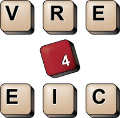Contact
For any further information, please contact the ERCIM Office at This email address is being protected from spambots. You need JavaScript enabled to view it.
For any further information, please contact the ERCIM Office at This email address is being protected from spambots. You need JavaScript enabled to view it.
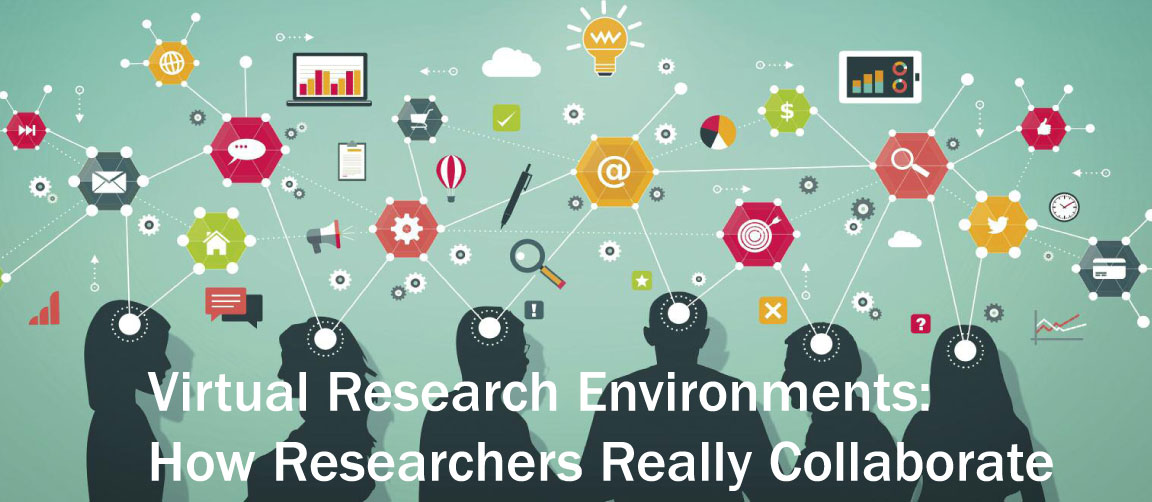
Research has increasingly become specialised, although many phenomena can only be understood via a multidisciplinary approach. Recently, many communities have set research infrastructures (RIs) bringing together teams and assets for easing collaboration.
(see also "Virtual Research Environments: How Researchers Really Collaborate" in ERCIM News 109, April 2017)This collaboration comes with complications. Each community has developed its own methods, data formats and tools, leading to a great heterogeneity in scope, features, protocols and technologies.
One way to assist and encourage multidisciplinary research is to bring together the communities and assets of RIs. The goal of a Virtual Research Environment (VRE) system is to decouple science from IT complexity, by providing research communities with a facility that takes care of IT, allowing them to focus on their work. e-VRE has taken into account a considerable amount of requirements and characteristics of many RIs in the goal of assisting researchers.
"What is a Virtual Research Environment?" explained by Keith Jeffery
This is the first video of a series of tutorials currently being produced on topis such as:
- The existing eRI ecosystem
- Trust, privacy and security policies
- Architecture design & microservices concept
- Metadata service
- Search and discovery of metadata in the eVRE
- Node & application service
- AAAI / Unity
- Query service.
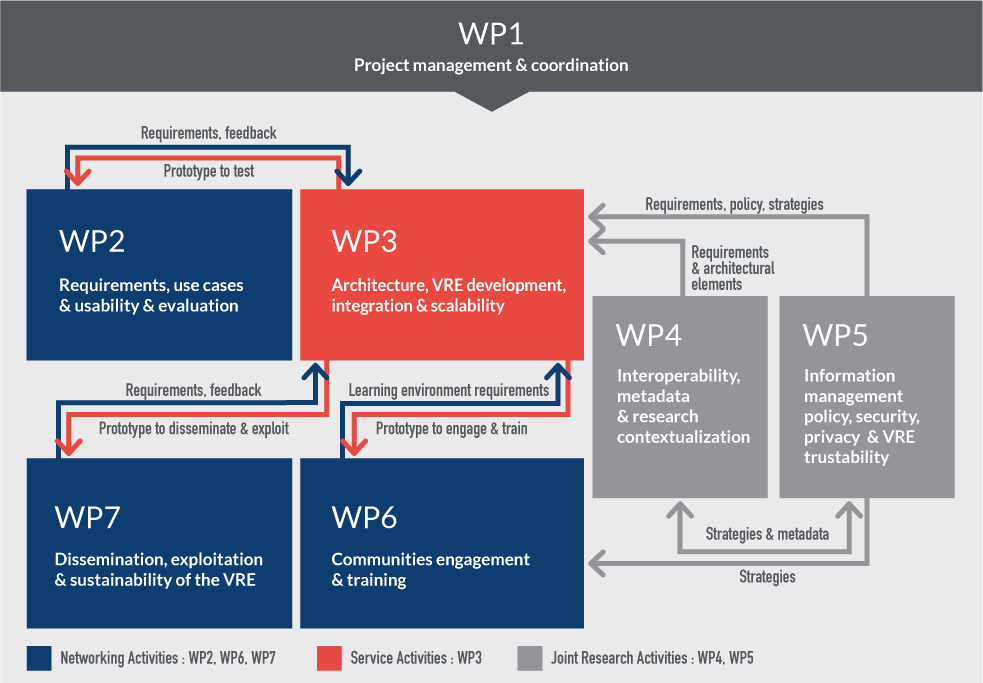
WP1 ensures the efficient administration and co-ordination of all project activities, focused on the achievement of the objectives of the project. It has two aspects: project management coordination and technical/scientific coordination.
WP2’s objective is to identify existing VREs, to identify user requirements for the development of enhanced VREs, to develop use cases for the enhanced VREs, to develop an evaluation methodology, and to evaluate the enhanced VRE architecture, prototypes and use cases.
WP3’s objective is to define the architecture for an enhanced VRE, provide the development building blocks for such a VRE over and above that available in existing VREs, integrate those advanced building blocks in a model VRE that can be applied to existing VREs, develop prototypes, and ensure the design is scalable while respecting aspects of trust, security, privacy, provenance, preservation, citation and evaluation.
WP4 provides the basis for interoperation (delivered by software through WP3) using contextual metadata. This basis consists of matching and mapping of metadata sets to CERIF and dealing within the mapping with the associated aspects of trust, security and privacy; provenance and preservation; citation and evaluation.
WP5 will develop strategies for handling issues related to security, privacy and trustability. It focuses on issues from the VRE4EIC project perspective, as well as on issues from the end-user perspective.
WP6’s objective is to identify existing VREs, to identify user requirements for the development of enhanced VREs, to develop use cases for the enhanced VREs, to develop an evaluation methodology, and to evaluate the enhanced VRE architecture, prototypes and use cases.
The objective of WP7 is to disseminate project results as widely and effectively as possible across three communities: VRE users, VRE developers, scientific VRE researchers, and data publishers who wish their data to be available to VRE users.
| Participant No | Participant organisation name | Country | Logo |
|---|---|---|---|
|
1 |
Coordinator - The European Research Consortium for Informatics and Mathematics (ERCIM) |
 |
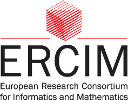 |
| 2 | Centrum Wiskunde & Informatica (CWI) |
 |
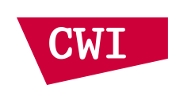 |
| 3 | Istituto di Scienza e Tecnologie dell’ Informazione – Consiglio Nazionale delle Ricerche (CNR) |
 |
 |
| 4 | Foundation for Research and Technology - Hellas (FORTH) |
 |
 |
| 5 | Delft University of Technology (TU DELFT) |
 |
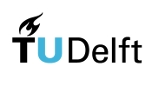 |
| 6 | European Current Research Information Systems (EUROCRIS) |
 |
 |
| 7 | Instituto Nazionale Geofisica e Volcanologica (INGV) |
 |
 |
| 8 | University of Amsterdam (UVA) |
 |
 |
